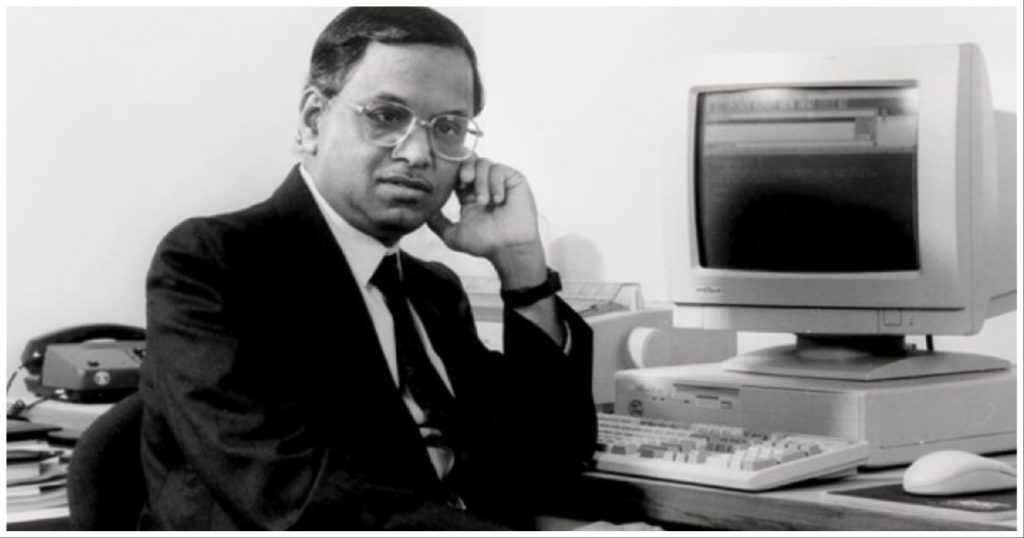The Indian startup ecosystem isn’t’ having the best time of late — it’s battling layoffs, slashed valuations, and multiple allegations of fraud. Founders are being criticized for their profligacy, and venture capitalists are being pilloried for pumping up unsustainable company valuations. But while the Indian startup ecosystem is currently battling some headwinds, it’s quite remarkable that the country has a startup ecosystem in the first place.

Just over thirty years ago, it had taken Infosys founder Narayan Murthy 3 years and 50 trips to Delhi to procure a single computer. Infosys today has over 3.5 lakh employees, all of whom presumably have their own computers, but India’s notorious red-tape of yesteryear meant that Murthy had to struggle for 3 years to get his hands on a single one.
“There was also such a strict licensing regime to import a computer that it took me three years and I went about 50 times to Delhi,” Murthy said in an interview. “Those days I couldn’t afford a flight, so I took a train. I had to stay in some seedy place near Old Delhi Railway Station. Even that cost money for a fledgling company,” he added.
“For new companies, there was such a heavy tariff because even before you got a license, 50 visits meant — even if it was $500 a trip (at that time, it was Rs 6 per dollar) — $25,000 spent on a $100,000 computer before you bought it or got a license,” he says.
Murthy says he had to negotiate with government officials to be able to import the computers Infosys needed. “The officers did not know anything about computers,” Murthy recalls. “They would quibble about small things. Why do you need 64MB of memory? Go with only 48MB, they would say. Let’s say, if one got a licence after two years of running around, one would discover that the models one got the licence for had become old in the US,” he says.
India’s Nehruvian socialism — which had crippled the country’s economy for decades — didn’t just mean that importing computers was hard, but other tasks that Indian entrepreneurs today take for granted were unimaginably hard too.
“We did not have current account convertibility, so even if I had to travel abroad for one day, I had to apply to the Reserve Bank of India,” Murthy says. “That appears stupid today. I had to wait for 10-12 days. They might or might not get back. So, opening an office abroad, hiring consultants from abroad, having sales people abroad — they were not possible before 1991,” he added.
“We had an official called the Controller of Capital Issues, who incidentally did not understand capital markets at all. He was a civil servant sitting in Delhi. Nobody ever asked a question about why he was sitting in Delhi and not in Bombay, where the capital markets are. He rarely gave any premium on par value. When we went to the Controller of Capital Issues in 1990, for a Rs 10 par value share, he said that he would allow me Rs 11,” Murthy remembers.
All this meant that India’s economy was in the doldrums. The crippling of private enterprise meant that India ran a massive balance of payments deficit. It was unable to pay off its loans, and the government of the day had even trouble passing the budget. External help was drying up too — the International Monetary Fund suspended its loan program to India, and the World Bank also discontinued its assistance.
Faced with an existential crisis, India was forced to open up its economy in 1991. The regulations on private companies slowly decreased, and official red tape around entrepreneurship slowly ebbed away. India’s private sector slowly came back to life — IT services companies like Infosys and TCS began aggressively courting foreign clients, and the first internet companies began emerging — Shaadi.com was founded in 1996, and MakeMyTrip was founded in 2000. In 2007, Flipkart was founded, and in 2011, InMobi became the country’s first unicorn startup. India today has over a hundred unicorns. The fortunes of private companies has changed — the government runs a Startup India program that encourages people to start their own companies, and government ministers proudly rattle off India’s unicorn stats. And while India’s startup ecosystem is currently having a hard few months, it can be worthwhile to step back and realize how far it’s truly come.
